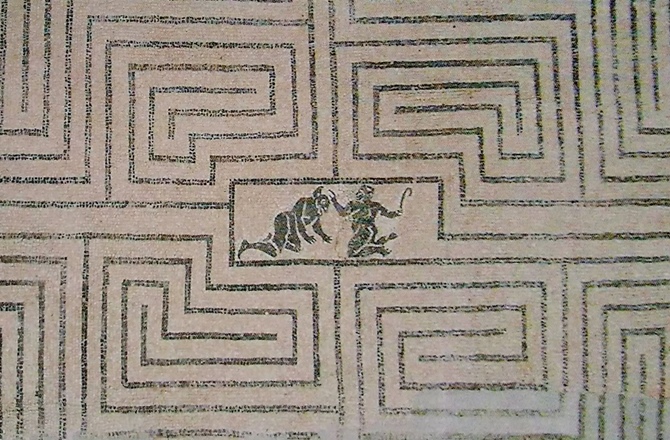The remains of one of the most prestigious maritime villas from Roman times are set to reopen July 2 in a small, almost uninhabited island off the Tuscan coast after been locked for 15 years.

[Credit: Paola Agazzi/Rossella Lorenzi]
"The villa was built on a harsh, uninhabited site, "Paola Rendini, of the archaeological superintendency of Tuscany, told Discovery News. "There is no water spring on the island, and raw materials had to be carried from the mainland. It was a huge task."
Despite such difficulties, the Romans managed to shape up a sprawling "otium" (leisure) villa, lavishly decorated with precious marbles, mosaics and frescoes.
The majestic complex marks Giannutri’s most glorious time. Today the southernmost island of the Tuscan archipelago is almost empty -- populated by a huge colony of seagulls and, in summer, by a group of villa owners who rely on rain water and water shipped from the mainland.

Part of the Tuscan Archipelago National Park, the island belongs to the municipality of Giglio island and is largely privately owned, apart from some areas owned by Italy’s Ministry of the Environment. The Villa Domitia and its annexes are under the control of Italy’s Ministry of Cultural Heritage.
Although the villa has been the focus of several restoration and conservation campaigns since 1989, overlapping regulations have basically prevented its opening to the public, slowing procedures and interventions.
"Finally, this jewel can be seen. We are very proud of this reopening," Sergio Ortelli, the mayor of Giglio and Giannutri islands, told Discovery News.

"The opening in Giannutri goes in this direction. In hard times, focusing on culture always pays off," Ortelli said.
Today the ruins represent a bright yet fragmented evidence of the once sumptuous villa, showing impressive flights of steps, granite columns, intricately-sculpted capitals, pieces of precious marbles and long stretches of thick walls in opus reticulatum (small squared stones laid diagonally to form a net-like pattern).
Spreading for about 10 acres, the villa was built on different terraces on a property which most likely belonged to the prominent Domitii Ahenobarbi, Nero’s family.

of fundings has prevented any digging -- work on the site since 1989 has focused on conservation and restoration
[Credit: Paola Agazzi/Rossella Lorenzi]
"Giannutri was the first island after Ostia, the port of Rome, thus relatively easy to reach. The villa was likely used by the emperors Domitian, Trajan and Hadrian," Rendini said.
Rendini, who has been working on the site since 1981, noted Villa Domitia represents one of the most intelligible evidences of a leisure imperial residence, fully equipped with all comforts.
Relying on large cisterns, a sophisticated system collected rainwater and solved the problem of the lack of springs on the island. Indeed, those cisterns are still in use today to provide water on Giannutri.

The complex had two well protected harbors, one on Cala Spalmatoio on the eastern coast, and the other at Cala Maestra, on the western side. Near this harbor, remains of a structure for the production of salted fish have been found.
The residential quarter, which included the bedrooms and a large room with stunning views over the sea, spread on three terraces around an open courtyard. This featured a rectangular basin for collecting rainwater, surrounded by six imposing granite columns boasting intricately carved Corinthian capitals.
On a much higher level, toward east, are the remains of the slave quarters.

"In 1928 a great marble flight of steps that goes down to the sea first emerged, revealing the importance and the (wealth) of the villa," the journal Emporium wrote in 1931.
Reporting on Vaccarino's archaeological efforts, the account described newly unearthed rooms with polychrome marbles and geometrical patterns and impressive mosaics such as one showing a marine scene with two dolphins.
Another large black and white mosaic, depicting Ariadne and Thesesus and the labyrinth of Knossos, was found at the entrance of the villa, possibly meant to impress the guests.

Villa Domitia is not freely accessible and some rules apply. Franca Zanichelli, director of the Tuscan Archipelago national park, explained that until Oct. 12, the site will be opened to 75 people daily – split in three groups of 25. The timetable for each of the three visits will match the arrival of the ferries from the mainland (Porto Santo Stefano) and from Giglio island.
Author: Rossella Lorenzi | Source: Discovery News [July 02, 2015]